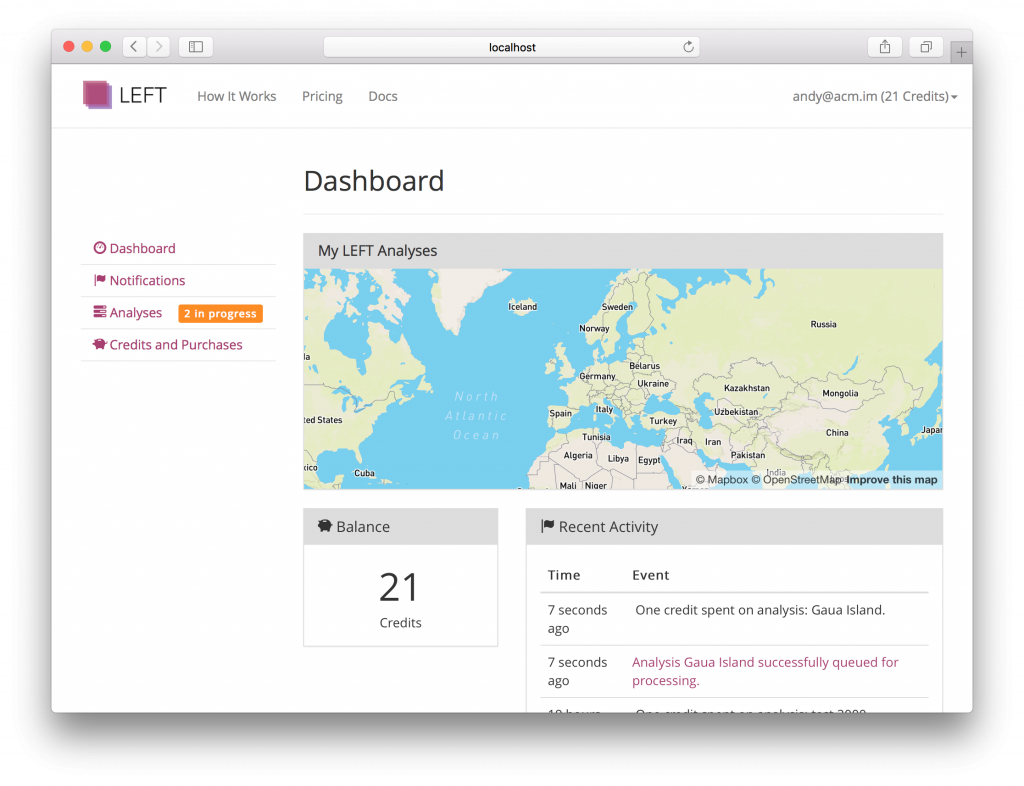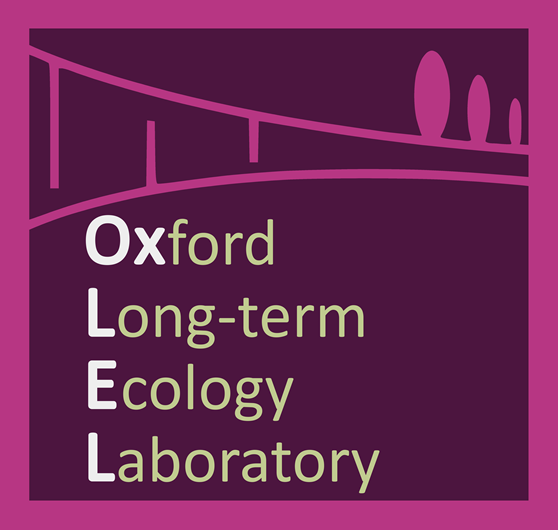Local Ecological Footprinting Tool (LEFT)
Description
LEFT is an internet-based decision support tool for evaluating the pattern of relative ecological value across a landscape. Such knowledge can help minimise environmental impact when planning development on that landscape. A user defines an area of interest anywhere in the world and the tool automatically processes a series of high-quality datasets using standardised published algorithms to produce maps at 300-metre resolution. The maps show landcover class, number of globally threatened terrestrial vertebrate species, beta-diversity of terrestrial vertebrates and flowering plants, habitat fragmentation, wetland habitat connectivity, number of migratory species, and vegetation resilience. Results are aggregated to produce a single map of relative ecological value.
LEFT’s straightforward web interface makes it possible for a new user to submit an analysis within a few minutes of coming to the website. No specialist software or GIS expertise is necessary. All analyses are secure and confidential. LEFT produces a customised PDF report containing 11 maps and a detailed explanation of the analysis process. Additionally, all the maps are provided as geotiffs in a zip file for specialist users to process with GIS software. Results are delivered to users by email within a few minutes of job submission.

LEFT is a valuable tool for businesses, academics, and NGOs, among others. To use the tool, please click here.
Long PR, Benz D, Macias-Fauria M, Seddon AWR, Holland PWA, Martin AC, Hagemann R, Frost TK, Simpson AC, Power DJ, Slaymaker MA, Willis KJ. (2017) LEFT – a web-based tool for the remote measurement and estimation of ecological value across global landscapes Methods in Ecology and Evolution 9: 571-579
Willis KJ, Jeffers ES, Tovar C, Long PR, Caithness N, Smit MGD, Hagemann R, Collin-Hansen C, Weissenberger J (2012). Determining the ecological value of landscapes beyond protected areas. Biological Conservation, 147(1): 3-12. doi:10.1016/j.biocon.2011.11.001
Project Details
People
-
 Professor Katherine J. Willis
Professor Katherine J. Willis -
 Dr Peter Long
Dr Peter Long -
 David Benz
David Benz -
 Dr. Marc Macias-Fauria
Dr. Marc Macias-Fauria -
 Dr Elizabeth S. Jeffers
Dr Elizabeth S. Jeffers -
 Dr. Alistair Seddon
Dr. Alistair Seddon
Funders
Equinor
Country
Global
